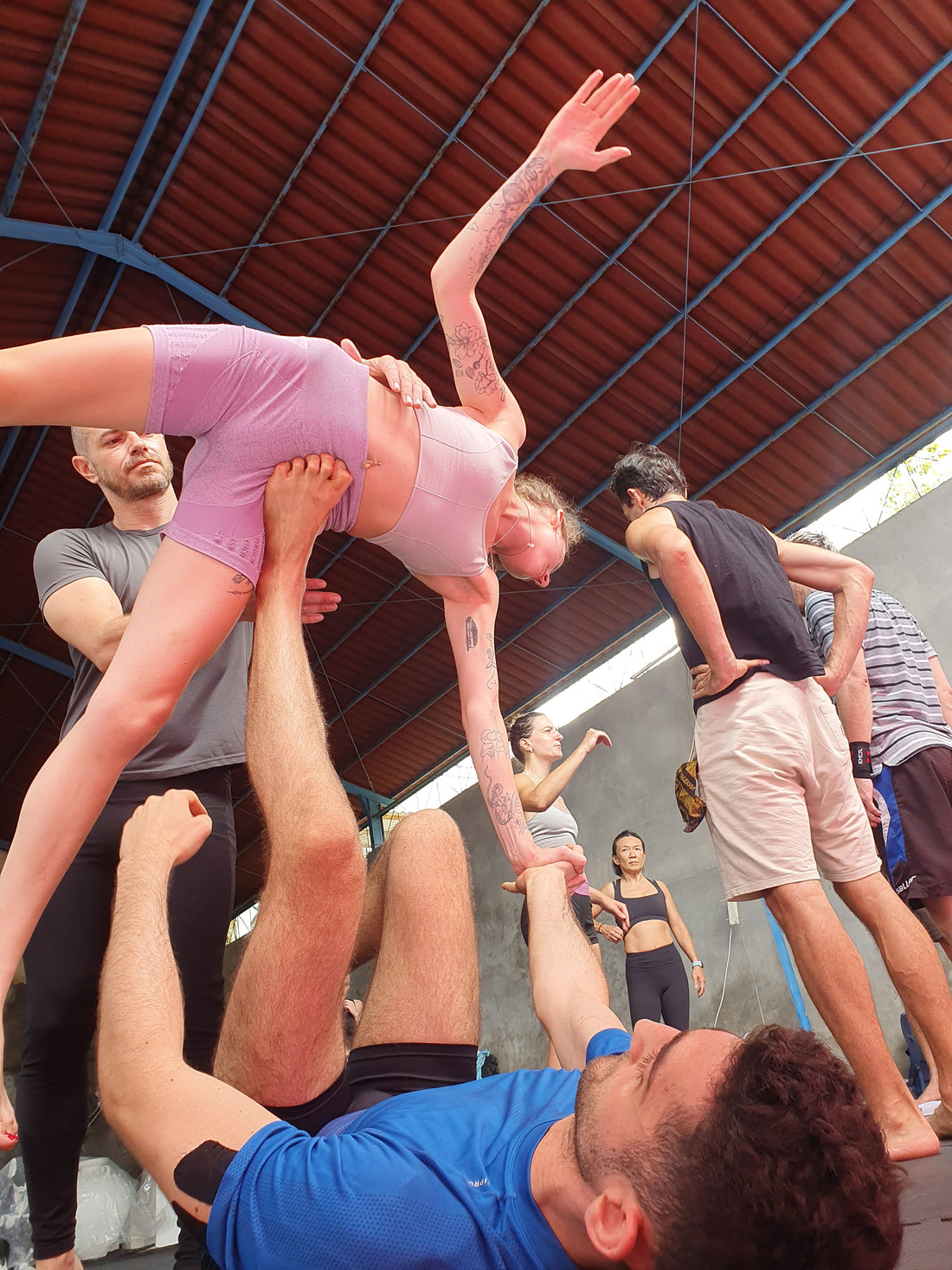Let’s face it—injuries happen.
No matter how careful or skilled you are, the occasional injury is an inevitable part of life, especially when you're into acroyoga or other physical activities. And while we can't always prevent injuries, we can control how we respond to them, which can make all the difference in recovery time.
One of the most crucial steps after an injury is reducing inflammation and swelling. Honestly, it's probably the most important thing you can do in the first 48 hours. Why? Because inflammation is like the body’s alarm system, sending out alerts that cause pain and restrict movement. If you don’t address it immediately, it gets harder to treat, and your recovery process can drag on for weeks—sometimes even months.
The solution is simple but effective: ice. You want to start applying ice as soon as you can, ideally within the first few hours of the injury. Here's the trick: use ice in intervals—20 to 30 minutes on, then 20 to 30 minutes off, for two days straight. Don’t skip a session because the consistency here is key. This reduces the swelling and numbs the pain, giving your body a head start on healing.
While ice is your best friend, pairing it with some anti-inflammatory medication like ibuprofen can also work wonders. The problem with injuries is that once inflammation sets in, it tends to stick around like an unwanted guest.
And let’s be real, once it’s there, it’s a beast to get rid of. So anything you can do to reduce that swelling early on will make the recovery process much smoother and quicker.
Now, once that first week passes and you start feeling a bit better, the temptation to jump back into action can be real.
Trust me, I’ve been there. You’re feeling stronger, a little more confident, and you think, “Hey, I can probably do a little more today.” But here’s the deal: this is a critical stage. You’re not out of the woods yet, and using the injured body part too soon can set you back weeks—or worse, months.
That’s why I recommend using a wrap, brace, or even kinesiology tape like KT Tape. Not only does it provide physical support, but it also serves as a constant reminder that you're still healing. You see that tape or feel that brace, and it triggers your brain to be careful. It’s these small things that help prevent those spontaneous movements that can lead to reinjury. Like when something falls, and your reflex is to catch it—suddenly, you've twisted or overstretched that healing muscle or joint, and you’re back to square one.
For instance, I recently helped out a friend who rolled her ankle. She could barely walk, so I brought her crutches and some of the supplies I’ve collected over the years—wraps, braces, all that good stuff. The crutches were a game-changer for her during the first week, but even as she started feeling better, I stressed the importance of continuing to baby that injury.
She’s still healing, and one wrong move could extend her recovery from a few weeks to several months. It’s not just about feeling better; it’s about staying cautious until you’re truly healed.
Here’s a little secret: injuries are often more about mental awareness than physical damage. When you have that tape or brace, it makes you consciously aware of your injury. It’s like your body has a “Handle with Care” sign slapped on it, and that awareness alone can help prevent reinjury.
You’ll find that with that constant reminder, you're less likely to push yourself too far or react reflexively in situations where you could hurt yourself again.
I’ve been through enough injuries to know that it’s not just the pain or the downtime that’s frustrating—it’s the mental game. You have to stay on top of your recovery, even when you start feeling better. I get it; I have a pretty high tolerance for pain, so I know what it’s like to push through when maybe you shouldn’t. But over time, I’ve learned that listening to your body and pacing yourself is the fastest way to get back to your full strength.
So, when you’re about a week into healing and starting to feel stronger, resist the urge to rush. Stick with the wraps, ice when you need to, and be mindful of how you're moving. It's easy to get overconfident, but one wrong step, one thoughtless moment, can turn a two-week recovery into a two-month ordeal. And no one wants that.
The recipe for healing is straightforward: ice early and often, use anti-inflammatories when needed, and keep that injury wrapped or taped until you're truly out of the danger zone.
It might seem tedious, but trust me—doing it right the first time saves you from the vicious cycle of reinjury.
At the end of the day, it's about being patient and smart with your recovery. Your body knows how to heal itself; you just have to give it the time and tools it needs to do so properly. So go ahead and take care of that injury—your future self will thank you for it.











4 Kommentare
7trpgt
cdlfoj
TaejrgXFbHzfohSA
HjzpZakTA